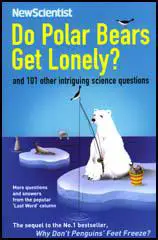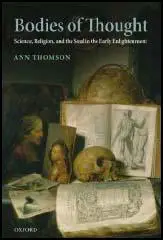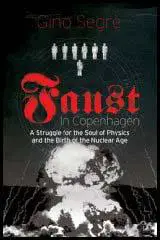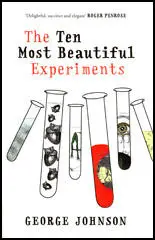Science

Title: Do Polar Bears Get Lonely?
Author: Mick O'Hare
Editor:
Publisher: Profile
Price: £7.99
Bookshop: Amazon
Spartacus Website: Science Websites
Category:
Do spiders get thirsty? How long would it take a cow to fill the Grand Canyon with milk? How do they get the stripes on toothpaste? Plus 107 other questions answered."Do Polar Bears Get Lonely?" is the third compilation of readers' answers to the questions in the 'Last Word' column of "New Scientist", the world's best-selling science weekly. Following the phenomenal success of "Does Anything Eat Wasps?" (2005) and the even more spectacularly successful "Why Don't Penguins' Feet Freeze?" (2006), this latest collection includes a bumper crop of wise and wonderful answers never before seen in book form.As usual, the simplest questions often have the most complex answers - while some that seem the knottiest have very simple explanations. "New Scientist's" 'Last Word' is regularly voted the magazine's most popular section as it celebrates all questions - the trivial, idiosyncratic, baffling and strange. This all-new and eagerly awaited selection of the best again presents popular science at its most entertaining and enlightening.

Title: The Faith of Scientists
Author: Nancy Frankenberry
Editor:
Publisher: Princeton University Press
Price: £17.95
Bookshop: Amazon
Spartacus Website: Science Websites
Category:
The Faith of Scientists is an anthology of writings by twenty-one legendary scientists, from the dawn of the Scientific Revolution to the frontiers of science today, about their faith, their views about God, and the place religion holds - or doesn't - in their lives in light of their commitment to science. This is the first book to bring together so many world-renowned figures of Western science and present them in their own words, offering an intimate window into their private and public reflections on science and faith. Leading religion scholar Nancy Frankenberry draws from diaries, personal letters, speeches, essays, and interviews, and reveals that the faith of scientists can take many different forms, whether religious or secular, supernatural or naturalistic, conventional or unorthodox. These eloquent writings reflect a spectrum of views from diverse areas of scientific inquiry. Represented here are some of the most influential and colossal personalities in the history of science, from the founders of science such as Galileo, Johannes Kepler, Francis Bacon, Isaac Newton, Charles Darwin, and Albert Einstein, to modern-day scientists like Carl Sagan, Stephen Jay Gould, Jane Goodall, Freeman Dyson, Stephen Hawking, Edward O. Wilson, and Ursula Goodenough. Frankenberry provides a general introduction as well as concise introductions to each chapter that place these writings in context and suggest further reading from the latest scholarship.

Title: sCIENCE-rELIGI0N-eNLIGHTENMENT/DP/o199236194/REF=SR_1_2?IE=utf8&S=B00KS&QID=1216893534&SR=1-2">Bodies of Thought
Author: Ann Thomson
Editor:
Publisher: Oxford University Press
Price: £60.00
Bookshop: Amazon
Spartacus Website:
Category:
Examining the development of a secular, purely material conception of human beings in the early Enlightenment, Bodies of Thought provides a fresh perspective on the intellectual culture of this period, and challenges certain influential interpretations of irreligious thought and the 'Radical Enlightenment'. Beginning with the debate on the soul in England, in which political and religious concerns were intertwined, and ending with the eruption of materialism onto the public stage in mid-eighteenth-century France, Ann Thomson looks at attempts to explain how the material brain thinks without the need for an immaterial and immortal soul. She shows how this current of thinking fed into the later eighteenth-century 'Natural History of Man', the earlier roots of which have been overlooked by many scholars. Although much attention has been paid to the atheistic French materialists, their link to the preceding period has been studied only partially, and the current interest in what is called the 'Radical Enlightenment' has served to obscure rather than enlighten this history.By bringing out the importance of both Protestant theological debates and medical thinking in England, and by following the different debates on the soul in Holland and France, this book shows that attempts to find a single coherent strand of radical irreligious thought running through the early Enlightenment, coming to fruition in the second half of the eighteenth century, ignore the multiple channels which composed Enlightenment thinking.

Title: Faust in Copenhagen
Author: Gino Segre
Editor:
Publisher: Pimlico
Price: £12.99
Bookshop: Amazon
Spartacus Website: Atom Bomb
Category:
In April 1932, about forty mostly young scientists attended Niels Bohr's Copenhagen Institute for their week-long once-a-year freewheeling physics conference. For many, it would come to represent the last gathering where they were able to conduct such discussions in the spirit of camaraderie and in a milieu that felt safe. There was much talk that April about new findings, about their careers and about political events in their own countries, but the core of their discourse was physics. The neutron had been discovered two months before the meeting and the first experimentally induced nuclear transmutation had been achieved just the week before they gathered in Copenhagen. The era of nuclear physics, of nuclear power, of big science and of large-scale experiments had begun. The events of 1932 would change the direction of their research and of their lives.These discoveries also brought with them the first glimmerings of the nuclear weapons that would move physicists into the arena of international power struggles. "Faust in Copenhagen" centres on the lives and careers of seven physicists.
Six of them - Niels Bohr, Paul Ehrenfest, Lise Meitner, Wolfang Pauli, Werner Heisenberg and Paul Dirac - had been sitting in the front row at the Copenhagen meeting, and were already in the pantheon of physics greats. The seventh, Max Delbruck, was the author of a skit concluding the meeting, in which the junior physicists poked fun at their elders. As a version of Goethe's "Faust", adapted to embrace the complexities of contemporary physics, the skit eerily foreshadows many events that unfolded in subsequent years. Indeed it touched upon the very soul of science: a Faustian struggle between good and evil, between peaceful uses of scientific discovery and destructive ones and on the interface of the political and scientific worlds.

Title: The Ten Most Beautiful Experiments
Author: George Johnson
Editor:
Publisher: Bodley Head
Price: £14.99
Bookshop: Amazon
Spartacus Website: Science Websites
Category:
From the universally praised New York Times science writer George Johnson, an irresistible book on the ten most fascinating experiments in the history of science—moments when a curious soul posed a particularly eloquent question to nature and received a crisp, unambiguous reply: Galileo: The Way Things Really Move; William Harvey: Mysteries of the Heart; Isaac Newton: What a Colour Is; Antoine-Laurent de Lavoisier: The Farmer’s Daughter; Luigi Galvini: Animal Electricity; Michel Faraday: Something Deeply Hidden; James Joule: How the World Works; A. Michelson: Lost in Space; Ivan Pavlov: Measuring the Immeasurable and Robert Millikan: In the Borderland.
